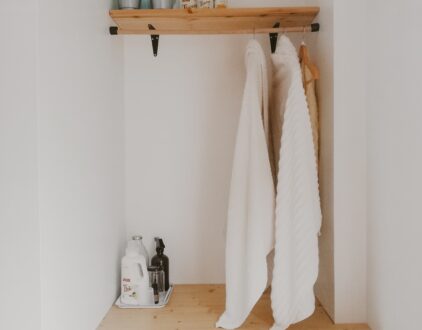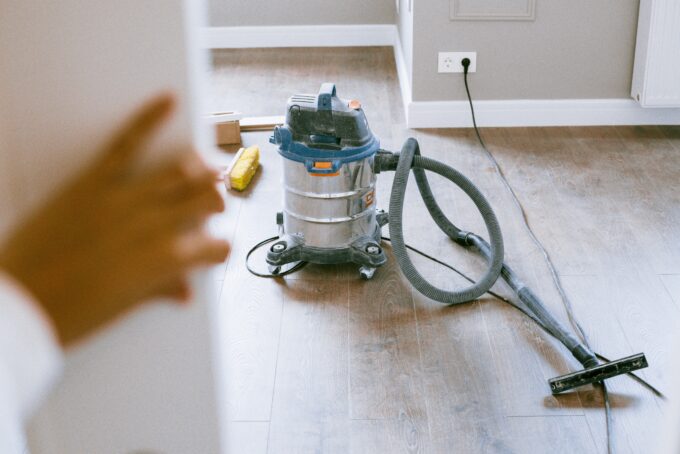Some things are worth the little extra effort needed to save a few bucks, and sometimes, that little extra effort is much simpler than it seems. That is the case with making homemade laundry detergent/laundry soap. A good laundry detergent is not cheap but it’s also something that you cannot skip out on. However, the main ingredients needed to make such products are much cheaper to buy and save you money with how long they last. Making homemade laundry detergent/soap can be a cost-effective and environmentally friendly alternative to store-bought options. Homemade laundry detergent is also great for those that want to customize their detergent to their needs, whether that is making it suitable for sensitive skin, giving it a stronger or weaker scent or choosing whether to add a scent at all.
Many recipes exist online for making laundry soap at home, so you will have to try them out until you find one that satisfies your washing needs. Here’s a simple recipe for a basic homemade laundry detergent.
Homemade Laundry Detergent Recipe
Ingredients
1 bar of soap (Fels-Naptha, Castile soap, or any other soap of your choice)
1 cup of washing soda, NOT baking soda (sodium carbonate)
Baking soda is often recommended for its gentle cleaning properties and ability to neutralize odors, but for a more robust homemade laundry detergent, washing soda is the preferred choice due to its stronger alkalinity and cleaning power.
1 cup of borax (sodium borate)
The washing soda helps cut grease and wash clothes clean while the borax boosts stain removal.
Instructions
- Grate the soap: Use a cheese grater or food processor to grate the entire bar of soap into small, fine particles.
- Mix ingredients: In a large bowl, combine the grated soap, washing soda, and borax. Stir the mixture thoroughly to ensure an even distribution of ingredients.
- Store: Transfer the mixture into an airtight container for storage. A large glass jar or a plastic container with a tight-fitting lid works well.
How To
Use about 1-2 tablespoons of the homemade detergent per load, depending on the size of your laundry and the soil of the clothes. You can add the detergent directly to the drum of the washing machine or use the detergent dispenser if your machine has one.
Keep in mind that this recipe doesn’t produce suds like commercial detergents, but it effectively cleans clothes. Additionally, cleaning expert Mary Marlowe Leverette for The Spruce explained that homemade laundry detergent is not the best at stain removal although it does great with cleaning everyday soil from clothes. She recommended using an all-purpose stain remover before putting the clothes in the washing machine.
Note: Some washing machines and clothing manufacturers recommend using specific types of detergent, so be aware of any warranty or care instructions for your machine and garments. Additionally, this recipe may not be suitable for use in high-efficiency (HE) washing machines. Always check your machine’s guidelines for the type of detergent recommended.
You can customize and tweak this recipe by adding essential oils for scent, using different types of soap, or adjusting the amounts of washing soda and borax. Always make sure to grate or chop the soap into small flakes so it will dissolve properly in each wash load.
Tips for Making and Using Homemade Laundry Detergent
- Choose the right soap: Use a mild soap, such as Fels-Naptha, Castile soap, or a soap specifically designed for laundry use. Avoid using heavily scented or moisturizing soaps, as they may leave residues on clothes.
- Store in an airtight container: Keep the homemade detergent in an airtight container to prevent clumping and maintain its effectiveness. A large glass jar or a plastic container with a tight-fitting lid works well.
- Use the right amount: Experiment with the quantity of detergent to find the right amount for your specific laundry needs. Start with a small amount and adjust based on the size of the load and the level of dirtiness.
- Pre-dissolve for cold water washing: Homemade laundry detergent may not dissolve as easily in cold water. To avoid potential residue, dissolve the detergent in warm water before adding it to the washing machine.
- Check your washing machine compatibility: Some washing machines, especially high-efficiency (HE) machines, may have specific requirements for detergent. Check your machine’s manual to ensure it is compatible with homemade detergent.
- Add vinegar for fabric softening: If you miss the fabric softening effect of commercial detergents, you can add a small amount of white vinegar to the rinse cycle. It helps soften fabrics and reduce detergent residue.
- Be mindful of allergies: If you or your family members have sensitive skin or allergies, choose a mild soap and consider skipping the fragrance. You can also add a few drops of essential oils for a natural scent if desired.
- Test on a small load first: Before using homemade detergent on all your clothes, test it on a small load to ensure compatibility with your washing machine and to observe how it affects your clothes.
How to Break up Homemade Laundry Detergent That Has Clumped Up
If your homemade laundry detergent has clumped up due to improper sealing or exposure to moisture, you can take steps to break up the clumps and restore it to a usable state. Here’s what you can do:
- Break up the clumps: Use a spoon, fork, or any utensil to break up the clumps in the detergent. Try to break them into smaller particles for easier dissolving in water.
- Use a blender or food processor: For more stubborn clumps, transfer the detergent to a blender or food processor and pulse until you achieve a finer, more uniform texture. Be cautious not to blend excessively, as it may create dust.
- Store in a dry place: After breaking up the clumps, ensure that you store the detergent in a dry and airtight container. Moisture is a common cause of clumping, so preventing further exposure will help maintain the detergent’s consistency.
- Add a moisture absorber: Placing a moisture-absorbing agent, like silica gel packets or rice, in the container can help prevent clumping by reducing humidity. Make sure these packets are sealed or placed in a way that they won’t come into direct contact with the detergent.
- Use a desiccant: A desiccant, such as calcium chloride, can also be effective in absorbing moisture. You can place a small dish of desiccant in the container to help keep the detergent dry.
- Divide into smaller containers: Consider dividing your homemade detergent into smaller portions. This minimizes the exposure of the entire batch to air and moisture every time you open the container.
popular posts
- 1It’s Black Business Month, So Let’s Go Shopping and #BuyBlack!
- 2These Home Decor Items Will Instantly Make Your Space Look Outdated
- 3Black-Owned Home Decor Stores To Support Across the United States
- 4A Look Inside Elon Musk's Tiny $50,000 House
- 57 Black and Multicultural Designers To Follow For Design Inspo

These Are The Best Non-Toxic Laundry Detergents To 'Add To Cart'
by Kelsey Marie | March 30, 2023
Spaces
Whether it’s luxury or ease, every area of your home should be as fabulous and unique as you.

Get These 5 Eco-Friendly Cleaning Products Before Your Next 'Cleaning Day'
by homeandtexture | February 23, 2023
How to Clean Quartz Countertops and Top Product Recommendations
by Melody Beuzelin | April 11, 2023
5 Places You’re Probably Forgetting To Clean In Your Home
by Brittni Williams | April 20, 2023
FOLLOW ALONG ON INSTAGRAM
#homeandtexture
Find us on social for more home inspiration where culture, personal style, and sophisticated shopping intersect to help you create a home where you love to live.






